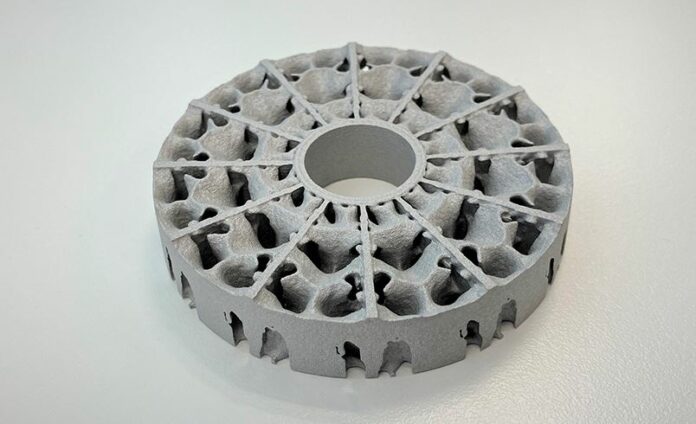
Aluminium 3D printed parts production enters a new phase as AM company Ricoh joins hands with Siemens Digital Industries Software for industrialization of its aluminium Binder Jetting (BJT) solution.
The 3D printing service provider is banking on the additive manufacturing network capabilities of Siemens to maximize the process efficiency of BJT in order to use it in industrial settings.
Using Siemens’ Additive Manufacturing Network solution,an advanced online order-to-delivery system, Ricoh is optimizing the aluminium BJT workflow to enhance the production preparation, planning, scheduling and production management seamlessly.
The company is ensuring that each step in BJT is quality stabilized and production controlled by collecting and storing data through Siemens’ Brownfield Connectivity.
Senior Vice President, Digital Manufacturing Software, Siemens Digital Industries Software, Zvi Feuer said: “The production of aluminum parts is a holy grail for the additive industry, and we’re delighted that Ricoh has chosen Siemens’ Additive Manufacturing Network capabilities from the Siemens Xcelerator portfolio of industry software to help them commercialize a much sought-after process”.
Ricoh has been quietly working on its Binder Jetting technology for more than four years now. The collaboration with Siemens is the first public announcement they make in this regard.
Both Ricoh and Siemens are hoping to commercialize their technologies as Siemens promises to continue optimizing the aluminium BJT workflow through its solutions.
Ricoh’s proprietary Binder Jetting Technology applies its inkjet printing technology to produce metal 3D parts, specially aluminium metal parts which are complex in shape and can’t be done through conventional metal processing methods like casting and machining. The BJT process makes aluminium parts by spreading out aluminium alloy powder over the modeling area and solidifying it with a specially formulated binder to shape the part. After layer-by-layer processing the green body part is sintered in a furnace to create the ultimate densified 3D printed parts which can be post-processed if needed.
Speaking about the matter, General Manager of Additive Manufacturing Business Center, Ricoh Futures Business Unit, Ricoh Company, Ltd.,Tokutaro Fukushima said: “Ricoh will enable our customers to manufacture innovative aluminum components that have never been produced before by any process and will work with them to realize new customer value in the area of electrification of EVs and other forms of mobility”.
Remember, you can post job opportunities in the AM Industry on 3D ADEPT Media free of charge or look for a job via our job board. Make sure to follow us on our social networks and subscribe to our weekly newsletter : Facebook, Twitter, LinkedIn & Instagram ! If you want to be featured in the next issue of our digital magazine or if you hear a story that needs to be heard, make sure to send it to contact@3dadept.com





